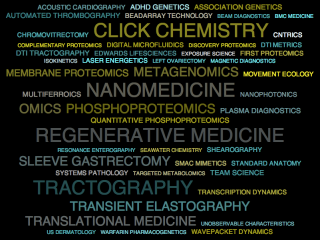As most readers of this blog are probably aware, Mohammad Warda and Jin Han published a paper in Proteomics that contained several pages of text copied from unreferenced sources. Exactly one month ago it was thus retracted “due to a substantial overlap of the content of this article with previously published articles in other journals”.
Plagiarism is, however, not the main issue. The paper by Warda and Han also claimed to disprove the endosymbiotic origin of mitochondria, mentioned fingerprints of a mighty creator, and proposed mitochondria to be the missing link between the body and the preserved wisdom of the soul!
It remains a mystery how a manuscript with such unsubstantiated claims was accepted for publication in a respectable, peer-reviewed journal. The retraction notice by Proteomics made no attempt to explain this, and their approved draft press release merely states that it was due to “human error”. I would have been really worried if it could happen without human error being involved. Although this draft was approved a month ago, the final version is nowhere to be found on the internet, also not on the Proteomics website. I thus wonder if an official press release was ever published.
Attila Csordas, PZ Myers, Steven Salzberg, and I have decided to mark the one month anniversary of the retraction by pointing out the important questions that still remain to be answered by the Editor in Chief of Proteomics, Prof. Michael J. Dunn.
The manuscript contains four parts with unsupported claims that should have been caught by any peer reviewer or editor:
- Title – “Mitochondria, the missing link between body and soul”.
- Abstract – “These data are presented with novel proteomics evidence to disprove the endosymbiotic hypothesis of mitochondrial evolution that is replaced in this work by a more realistic alternative”.
- Section 3.4 – “More logically, the points that show proteomics overlapping between different forms of life are more likely to be interpreted as a reflection of a single common fingerprint initiated by a mighty creator than relying on a single cell that is, in a doubtful way, surprisingly originating all other kinds of life”.
- Conclusions – “We realize so far that the mitochondria could be the link between the body and this preserved wisdom of the soul devoted to guaranteeing life”.
My questions to Michael J. Dunn are when in the publication process these parts first appeared:
- Were they already in the initial version that was submitted to Proteomics and sent out for peer review?
- Did they appear in a revised version that was sent to the peer reviewers?
- Were they introduced in a revised version that was accepted without sending it to the reviewers?
- Or were they added at the copy editing stage, that is after the manuscript had formally been accepted?
I want to make explicit that the aim with these questions is not to place the blame but to elucidate what went wrong in the publication process. To prevent similar incidents inthe future, it is important to know whether the editor and the peer reviewers overlooked glaring flaws of the manuscript or if the flawed parts were introduced after peer review. It is not important who the editor and the peer reviewers are. I sincerely hope that Prof. Dunn will help improve the procedures for peer reviewed publication by answering the questions in this post and in the related posts on PIMM, Pharyngula, and Genomics, Evolution, and Pseudoscience.
 Cite this post
Cite this post







 Cite this post
Cite this post